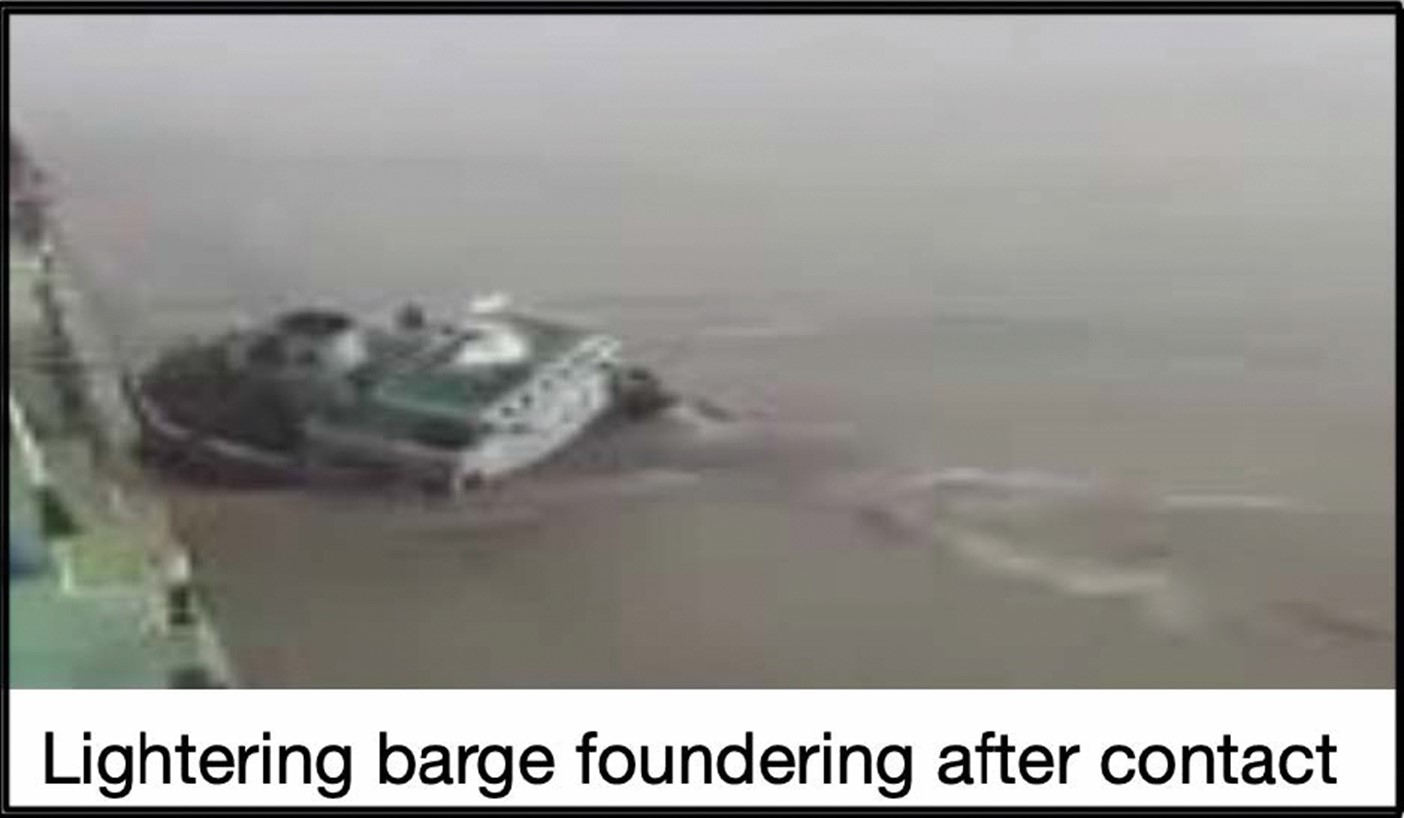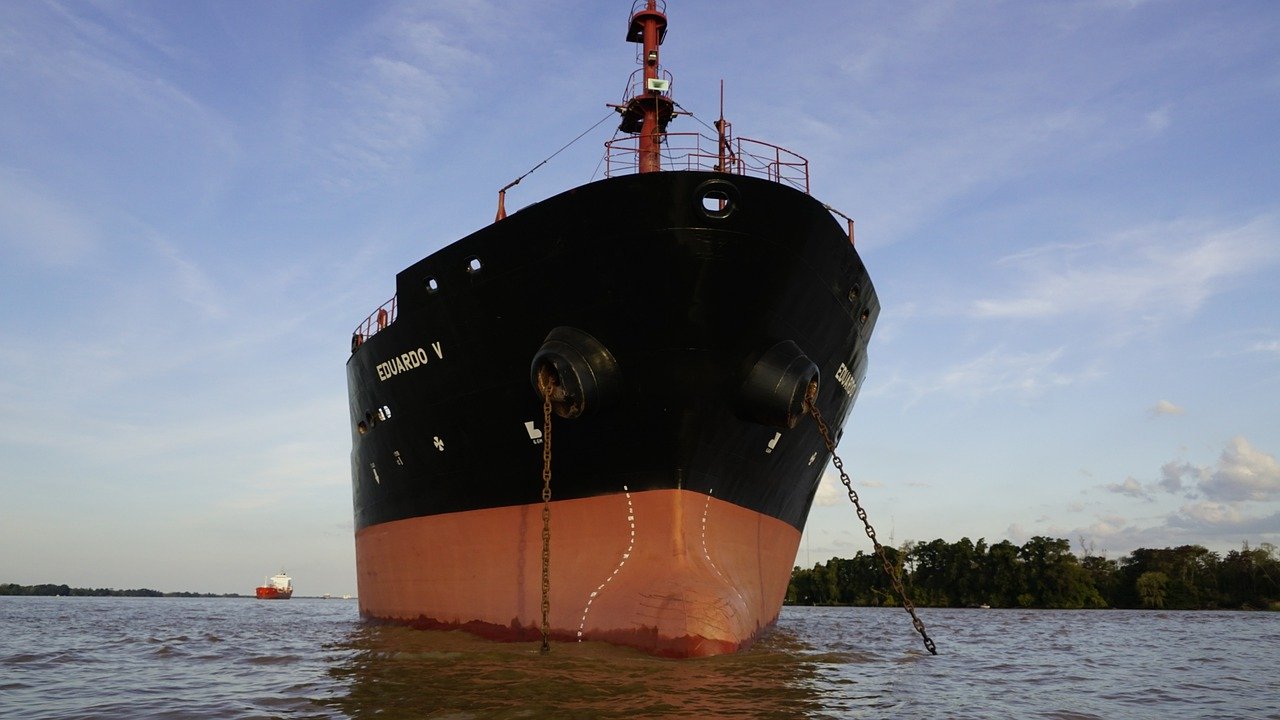A bulk carrier dragging anchor collided with an anchored vessel and while attempting to prevent this, caused a lightering barge to founder. Re-positioning a vessel should not be done with barges attached, warns The Nautical Institute in a report on the accident.
The Nautical Institute gathers reports of maritime accidents and near-misses. It then publishes these so-called Mars Reports (anonymously) to prevent other accidents from happening. A summary of this incident:
A loaded bulk carrier arrived at an anchorage off a busy port. Once at anchor, the plan was to use the ship’s cranes to discharge the cargo of scrap steel into self-propelled lightering barges made fast alongside both sides.
After the cargo lightering operation had begun, the vessel was observed to be dragging anchor in a southerly direction. There was a low under keel clearance and strong currents, so the main engine was used to slow the movement of the vessel. Despite this, the cargo discharge operation to the barges continued apace.
Discharging operations had been ongoing for about three days when the local Port Control called the vessel and instructed them to reposition their anchorage position because they had by now dragged too close to the pilot boarding area. The plan was to lift anchor and move back to the initial anchorage spot. The Master decided to continue cargo discharge into the three barges moored on both sides of the vessel while making the move under slow engine.
Also read: When two anchors are not enough
As the vessel was about to drop anchor at the planned position, Port Control advised the vessel not to re-anchor there, but to go to a position further out. As they made way towards the new position, the combination of strong tidal current astern (approx. 1.5kts), the slow speed of the bulk carrier and the added drag of the barges on both sides made manoeuvring more sluggish.
It became apparent that course made good was bringing the bulk carrier into a collision situation with an anchored vessel. In a desperate attempt to avoid contact with the anchored vessel, the engine was increased to half ahead and then full ahead and hard port helm ordered. The bulk carrier nonetheless made contact on its starboard side with the other anchored vessel.
The lightering barge that was moored on that side sustained major damage and foundered within five minutes. Some of its crew jumped into the water and were recovered. Unfortunately two crew were trapped within the sinking barge and were later declared deceased.

Advice from The Nautical Institute
- Good seamanship would normally see the lightering operations halted and the barges released prior to weighing anchor and re-positioning the vessel. This would have increased manoeuvrability, possibly allowing the move to be accomplished without incident. No fatalities would have been sustained even had the collision nonetheless occurred.
- Low under keel clearance will cause increased drag forces on a vessel and can initiate dragging anchor when all other factors seem benign.
The picture at the top is a generic picture of an anchored vessel, not the vessel involved in this accident.
Also read: Broken anchor brake leads to anchoring kerfuffle
Mars Reports
This accident was covered in the Mars Reports, originally published as Mars 202313, that are part of Report Number 365. A selection of this Mars Report was also published in SWZ|Maritime’s April 2023 issue. The Nautical Institute compiles these reports to help prevent maritime accidents. That is why they are also published (in full) on SWZ|Maritime’s website.
More reports are needed to keep the scheme interesting and informative. All reports are read only by the Mars coordinator and are treated in the strictest confidence. To submit a report, please use the Mars report form.
Also read: ‘Wind direction shifts in a crowded anchorage can change the risk scenario’








